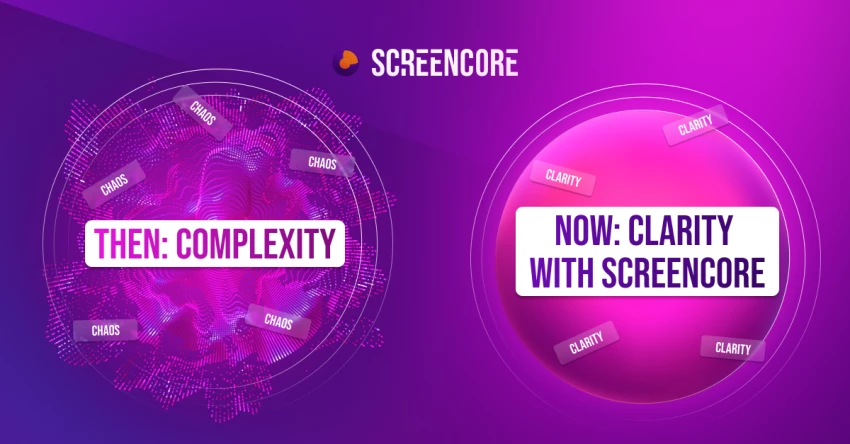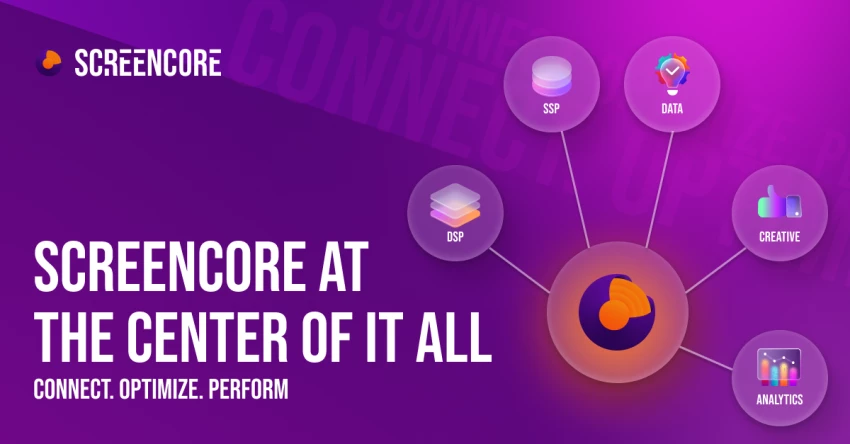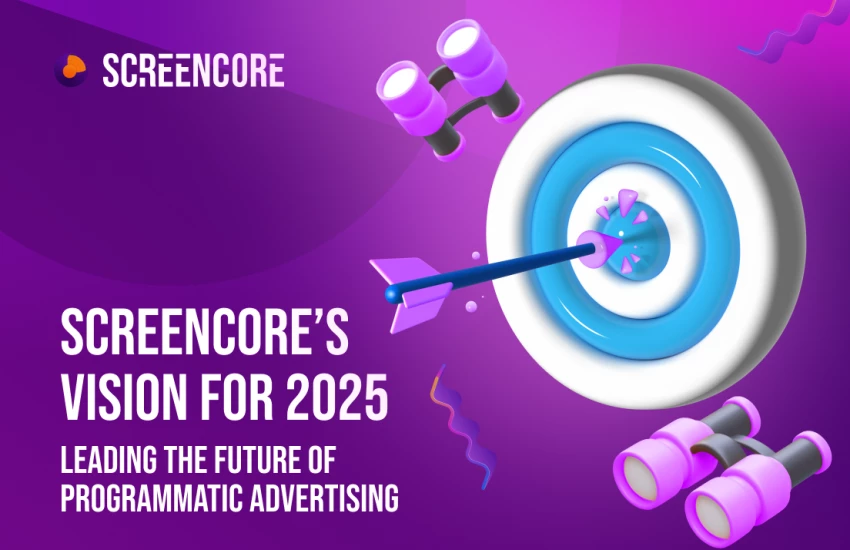Breaking Down Programmatic: What Each Ad Tech Tier Really Does — And Where Screencore Fits In

When Programmatic Feels Like a Maze
If you’ve ever tried to make sense of programmatic advertising, you know it can feel like decoding an unfamiliar language. Acronyms like DSP, SSP, and CDP are thrown around daily, yet even experienced marketers sometimes struggle to pinpoint what each actually does. Add thousands of vendors into the mix — each promising speed, scale, and magic — and clarity quickly disappears.
But understanding these layers isn’t just about looking smart in meetings. It’s about making better investment decisions, fixing problems faster, and building campaigns that perform. And that’s exactly where Screencore steps in — bringing transparency and precision back to programmatic.
Decoding the Ecosystem: DSP, SSP, CDP
Let’s start with the basics. A Demand-Side Platform (DSP) is where advertisers and agencies plan, bid, and optimize campaigns. It’s the brain of the operation — deciding which impressions to buy and at what price, often in real time.
On the publisher’s side, a Supply-Side Platform (SSP) manages and sells available ad space, ensuring publishers get the best possible value from their inventory while keeping the buying process efficient.
Then there’s the Customer Data Platform (CDP) — a tool that unifies first-party data from multiple touchpoints (site visits, purchases, CRM entries) into a single, actionable profile. In a privacy-first world, CDPs are becoming essential for brands that want to target effectively without relying on third-party cookies.

Minimalist icon-based graphic illustrating the main roles in programmatic advertising — Brand, Agency, DSP, Exchange, SSP, and Publisher — to clarify the flow and responsibilities in the ecosystem.
Where It Gets Messy
While these definitions sound straightforward, in reality, the lines often blur. Some vendors position themselves as both DSP and CDP. Others offer audience targeting while also running their own supply. The result? Overlap, inefficiency, and a lack of accountability when something underperforms.
The complexity multiplies when multiple intermediaries sit between buyer and seller. Every extra hop in the chain can mean more fees, slower performance, and less visibility into what’s really happening.

Split-screen comparison of chaotic, complex ad tech paths versus a clean, streamlined programmatic structure with Screencore at the center for clarity and efficiency.
How Screencore Changes the Game
Screencore’s DSP is designed for marketers who demand both performance and transparency, offering a platform where every decision is informed, measurable, and intentional.
At its core, Screencore delivers clean supply paths, ensuring you always know exactly where your budget is going and removing the hidden layers that dilute value. Its real-time optimization engine continuously adjusts bids based on live context — factoring in audience intent, placement relevance, and performance data — so campaigns adapt instantly to changing conditions.
And with a privacy-first targeting approach, Screencore integrates contextual intelligence with direct, consented data sources, enabling precise audience reach without compromising compliance. By uniting clarity with control, Screencore transforms a fragmented, often confusing programmatic ecosystem into a streamlined environment where every impression works harder and every campaign outcome is traceable.
The Value of Clarity
When you know exactly what each tech tier is supposed to do, you can spot gaps or inefficiencies immediately. Is a drop in performance due to poor targetinging, weak inventory, or low bid competitiveness? With clear roles and data transparency, find — and fixing — the issue is faster and easier.
This isn’t just a technical benefit. It’s a competitive one. In a market where advertisers are pressured to prove ROI quickly, the ability to act on accurate insights is what separates the leaders from the rest.

Hub-and-spoke diagram featuring Screencore at the center, connecting DSP, SSP, Data, Creative, and Analytics for optimized, integrated programmatic advertising performance.
Adapting to a Cookieless Future
The deprecation of third-party cookies has changed how the industry thinks about targeting. Publishers are focusing on quality, direct relationships with buyers. Advertisers are looking for privacy-compliant ways to reach audiences without losing precision.
Screencore bridges these priorities — integrating contextual targeting, first-party data, and supply transparency into one platform. This means you can continue to run high-performing campaigns without sacrificing compliance or control.
Want to go deeper into how we’re preparing for the next phase of programmatic? Check out Future-Proofing Programmatic Advertising: Screencore’s Privacy-First Approach for a closer look at our cookieless strategy, contextual buying methods, and commitment to transparent ad tech.
The programmatic ecosystem doesn’t have to feel like a maze. By clearly defining the roles of DSPs, SSPs, and CDPs — and aligning them with a transparent, performance-driven platform like Screencore — you can cut through the complexity and focus on results.
It’s time to stop guessing, start knowing, and run campaigns that actually work.
Ready to simplify your stack? Let’s talk.

 (1).webp)